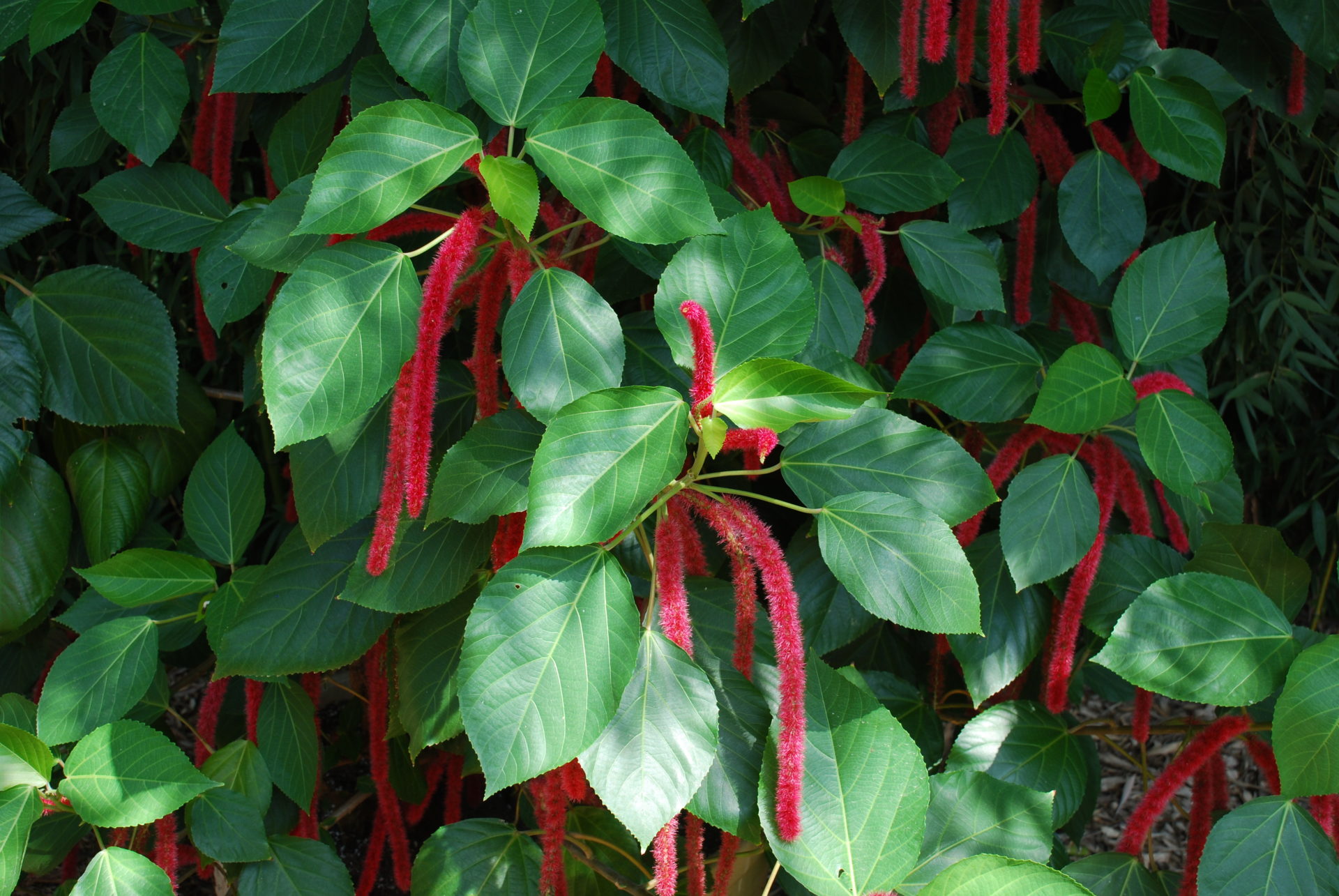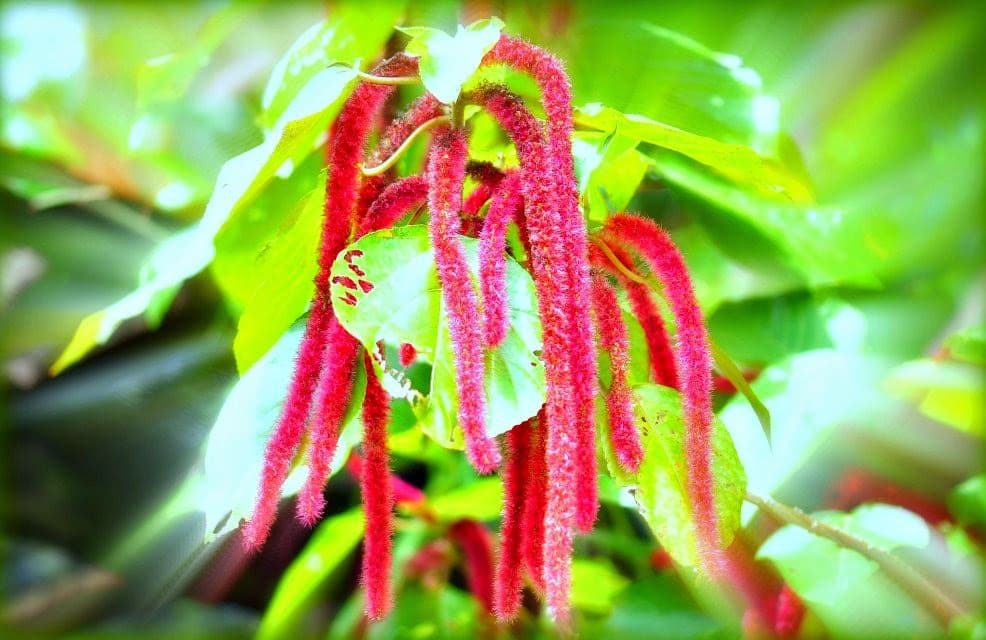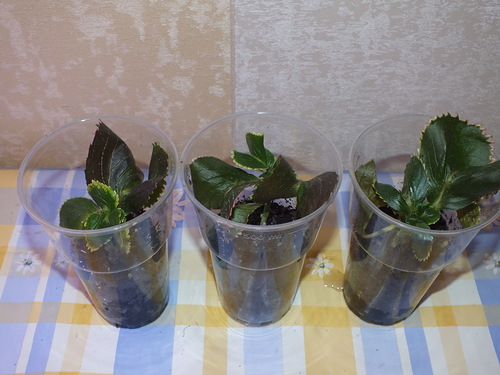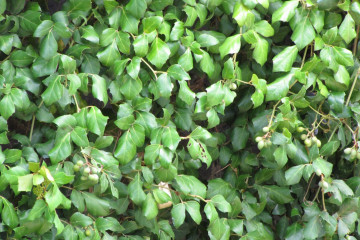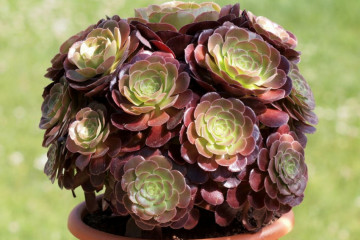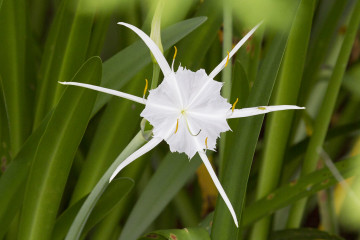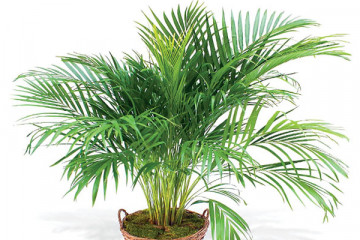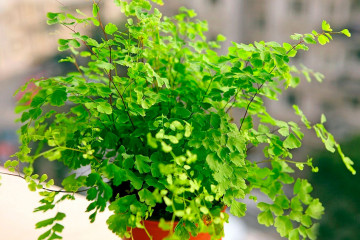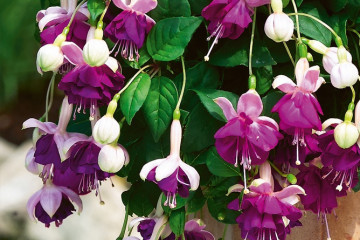Akalifa - home care and description
Content:
Akalifa is a very interesting plant. Its inflorescences resemble a fox's tail. Due to this similarity among the people, the Akalif was nicknamed the foxtail. He is so popular that one of the Skyrim characters bears his name - Akalifa.
Description of the flower
Akalifa is a flower of the Euphorbia family. Natural habitat - tropical rainforests of Southeast Asia and the Pacific Islands. The genus of the plant consists of 250 varieties. The origin of the name is interesting - from the ancient Greek "akalif" it is translated as "nettle". This coincidence is not without reason: the leaves contain substances that cause irritation.
As an indoor flower, akalifa has become known since 1898.It is very compact, in houses it does not grow more than 0.3-0.7 m.
Akalifa as an ampelous plant
For this purpose, the Haitian Akalifa is used. It has a spreading stem and small mint-colored leaves with jagged edges. The inflorescence is a purple ear. The bud length is no more than 10 cm. Due to its small size, it looks great in hanging pots or baskets and pleases with its impressive flowering.
Akalifa: home care
It is not difficult to take care of akalifa at home, but do not forget about caution when working with a plant. Otherwise, the following symptoms are possible:
- skin rashes;
- tearing;
- headache.
Other nuances of caring for such a plant:
Temperature and lighting
Foxtail is a heat-loving plant. You cannot take him out into the street, since gusts of wind can harm him. The house should be placed in a place where there are practically no drafts.
Illumination is a very important factor. Akalifa prefers bright, but diffused light.
At a low level of illumination, decorativeness can deteriorate:
- the leaves will turn pale;
- flowering will worsen;
- the stem will stretch out and take on an ugly shape.
Watering
Foxtail is a plant with rapid growth and development, so it requires repeated watering. In the period of cold weather, it should be reduced. When the heat comes, the ground should always remain moist.
Fertilizers
It is necessary to feed the plant during intensive growth (from March to September). Complex mineral fertilizers are ideal for this purpose. Top dressing is done 2 times every 30 days. The use of organic fertilizers is also possible.
Transfer
Young foxtails are transplanted annually, adults - once every 3-4 years. Growing a foxtail for more than four years is pointless, since it stretches a lot. Without rejuvenation, the plant will lose its decorative effect in the third year.
Overgrown foxtails are replanted using the transshipment method with renewal of the topsoil. It is also necessary to cut the shoots in half.The best time to transplant Akalifa is spring.
Pruning
In order for old specimens to retain their attractiveness, you need to cut off the entire upper part, leaving a stump 20-30 cm high.Then it should be covered with a bag or glass cap, so the plant will give young shoots faster.
Reproduction
Akalifa can propagate with the help of seeds or by cuttings. Seedling starts from March-April. Seeds are planted in a soil mixture of leafy earth and sand (1: 1). The temperature should be within 20 ° C, and it is best to place the seedlings in a mini-greenhouse, where the seeds will develop more quickly.
For grafting, semi-lignified apical cuttings are taken. Before planting, the cuttings are treated with a root-forming stimulant. A container with a young plant is placed in a greenhouse or covered with polyethylene. After 45-60 days, the tip is pinched so that the foxtail bush better.
Possible plant problems
In case of violations of care, the Akalif can be attacked by aphids, worms and bladders.
When the foxtail is in relative coolness and low humidity, the leaves will begin to turn yellow and fall off. Spotted placers may occur - a manifestation of fungal diseases. With a lack of nitrogen, the leaves lose color and become pale. Acaricides and drugs against parasites of direct use will help to correct the situation.
Variety of species
Akalifa has many types. Here are the most famous and popular ones:
Akalifa Hispida
In the description of the akalifa hispid, it is said that its other name is akalifa bristly-haired. It is a small indoor flower with long inflorescences (about 45 cm). Their color can be dark pink or red. Outwardly, they are very similar to birch catkins. The leaves are thin, dark green, covered with branched veins. The edges are slightly serrated. Long and lush flowering.
Akalifa south
This species does not stand out in any way. Akalifa southern is a common weed. Its stem is straight and branched, reaching a height of half a meter. Flowers of two types: staminate (below) and pistillate (above). Inflorescences are spikelets. Blooms from July to August. The fruits are formed in August-September and are formations with hard hairs. The color ranges from gray to light brown.
Akalif Wilkes
This species is prized for its rounded leaves with a bronze tint and crimson spots. That is why it got its second name, copper sheet. Foxtail eventually turns into a tall bush, but there are also miniature specimens. Rare flowers also surprise with their red color, but they are still not as impressive as catchy leaves.
Akalifa Viginsi
The homeland of the endangered species is the Galapagos Islands. Due to the vigorous activity of people, this species practically does not occur in nature. It has wide, elongated leaves with sharp tips. Inflorescences are bright red, hanging.
Akalifa can rightfully be considered a very diverse plant. Numerous representatives include both attractive flowers and weeds. However, among the large selection, you can definitely find what you want. This plant will be an ideal decoration for any room, whether it be an ordinary apartment, a cozy country house or an office study.
